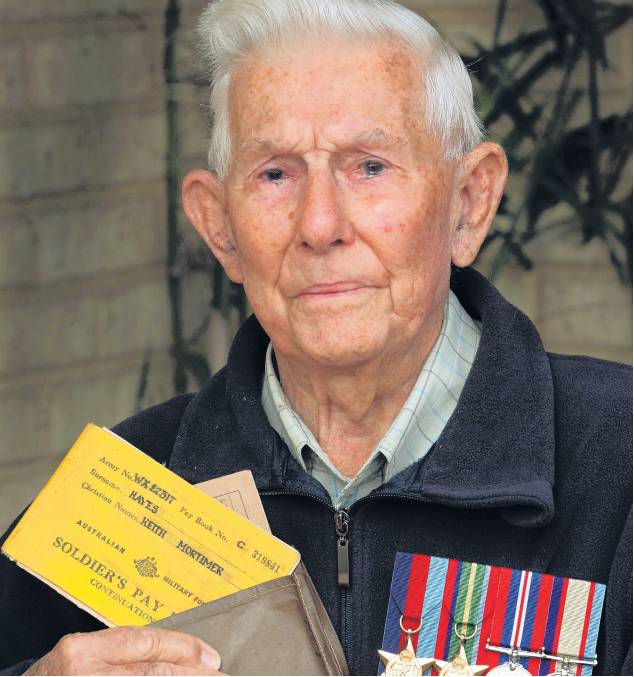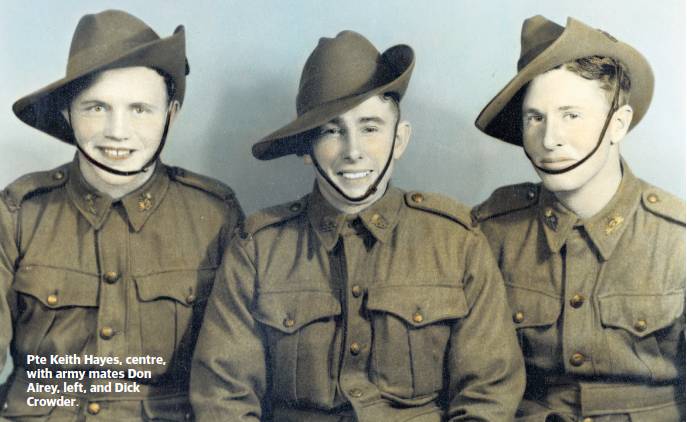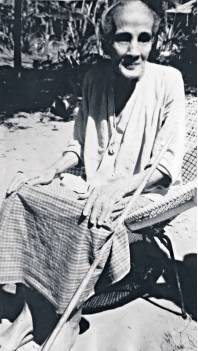‘Executed’ Digger had luck on his side
› Paul Cleary
The long and fortuitous life of Perth veteran Keith Hayes allowed him to bear witness to one of the greatest survival experiences of World War II, and in so doing he became a humble torchbearer for his mates and his generation.
Mr Hayes, who died on Thursday aged 97, was one of Australia’s first commandos — an elite group of men initially recruited in WA to form the 2/2 Independent Company.
After the bombing of Pearl Harbor in December 1941, the 2/2 (known as second-second) was deployed to the island of Timor as part of a forward defence strategy.
Many of the men were recruited from the West Australian Wheatbelt and though the slightly built Mr Hayes was raised in Perth, his avid pursuit of sport led recruiters to accept his nomination for the unit.
When the Japanese invaded Timor on February 19, 1942, Mr Hayes was one of 17 men captured in Dili. Of these men, 15 were executed.
Incredibly, despite being shot and bayoneted in an execution line-up, Mr Hayes survived his wounds and was taken to the home of local woman Berta Donnabella Martins.
Mr Hayes had been shot close to the present location of the Australian embassy, an area known to the commandos as “the Arab village”.
He looked up and saw two young boys from the village.
“I managed to get up and they came down and took me to dear old Berta and from then on she was in charge,” Mr Hayes said in an interview in 2016.
In what has to be one of great Good Samaritan acts of the war, Mrs Martins treated his wounds using mud packs and banana leaves, and nursed him back to health.
Mrs Martins was an impoverished woman who was childless and had been abandoned by her husband.
She cared for Mr Hayes in her village hut despite being petrified that the Japanese would discover him.
“At night, if there was any noise she would wrap me up in a cane mat. People in the village must have known, but not a word was said about it,” Mr Hayes said.
After about 10 days, Mrs Martins arranged for Mr Hayes to be spirited back to his unit, which had begun waging guerilla warfare against the Japanese.
Late one evening she wrapped Mr Hayes in a blanket and put him on a Timor pony and told two young men to take him up into the mountains.
When the company doctor Roger Dunkley saw his wounds, he said that he could not have done a better job of treating them himself.
Mr Hayes was evacuated to Australia in July 1942 and later joined the 2/11 Battalion, which was then posted to New Guinea.
But it was after the war that he and his 2/2 mates made sure they would not forget the support they received from Mrs Martins and thousands of other Timorese villagers. As the 2/2 had fought a successful guerilla war against the Japanese throughout 1942, they relied totally on Timorese villages and young men known as “criados” to support them.
As the ranks of the 2/2 thinned over the past two decades, Mr Hayes still led the unit through the streets of Perth for the Anzac Day march.
As recently as two years ago, he braved wet weather to lead the march at the age of 95.
Mr Hayes survived all but one of the 272 original members of the 2/2.
Earlier this week, Fred Otway, a 2/2 veteran originally from Perth, died just short of his 99th birthday. After the war Mr Hayes helped to create the 2/2 Commando Association which was dedicated to keeping the men in contact, and honouring the debt they owed to the Timorese people who had helped them survive.
The association continues to exist and is run by children of the veterans. President Peter Epps said that Mr Hayes spent many years helping to send materials including school and farm equipment, and seeds, to the people of East Timor.
Prominent in his home was a photograph taken of Mrs Martins after the war, which often prompted Mr Hayes’s grandchildren to ask him about the “lady with the long face”.
A funeral service will be held on Thursday at Karrakatta Cemetery at 10.30am.
At night-time, if there was any noise she’d wrap me up in a cane mat. People in the village must have known, but not a word was said about it.
Keith Hayes


